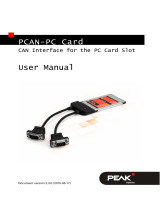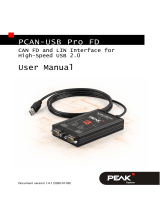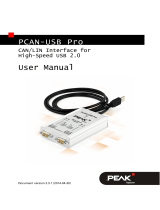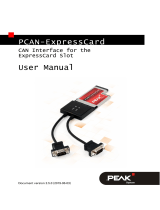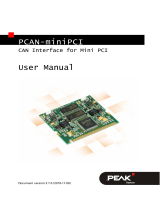
PCAN-USB – User Manual
11
3.2 Supplying External Devices via the CAN
Connector
On the PCAN-USB board (casing opened) a 5-Volt supply can
optionally be routed to pin 1 and/or pin 9 of the D-Sub connector
(PCAN-USB opto-decoupled: pin 1 only). Thus devices with low
power consumption (e.g. external bus converters) can be directly
supplied via the CAN connector.
When using this option the 5-Volt supply is connected to the power
supply of the computer and is not fused separately. The opto-
decoupled model of the adapter contains an interconnected DC/DC
converter. Therefore the current output is limited to 50 mA.
Proceed as follows to activate the 5-Volt supply:
Attention! Electrostatic discharge (ESD) can damage or destroy
components on the PCAN-USB board. Take precautions to
avoid ESD when handling the card.
In order to access the board open the casing of the PCAN-USB
adapter by cautiously pushing in the latches on both sides, e.g. with
a flat tip screwdriver.
Set the solder bridge(s) on the board of the PCAN-USB adapter
according to the desired function. During this procedure take
especially care not to produce unwanted short circuits on the board.
Figure 2 shows the positions of the solder fields JP3 on board of the
PCAN
-USB (IPEH-002021) and Figure 3 shows the positions of the
solder field
R11 on board of the PCAN-USB opto-decoupled (IPEH-
002022). The tables below contain the possible settings.





















